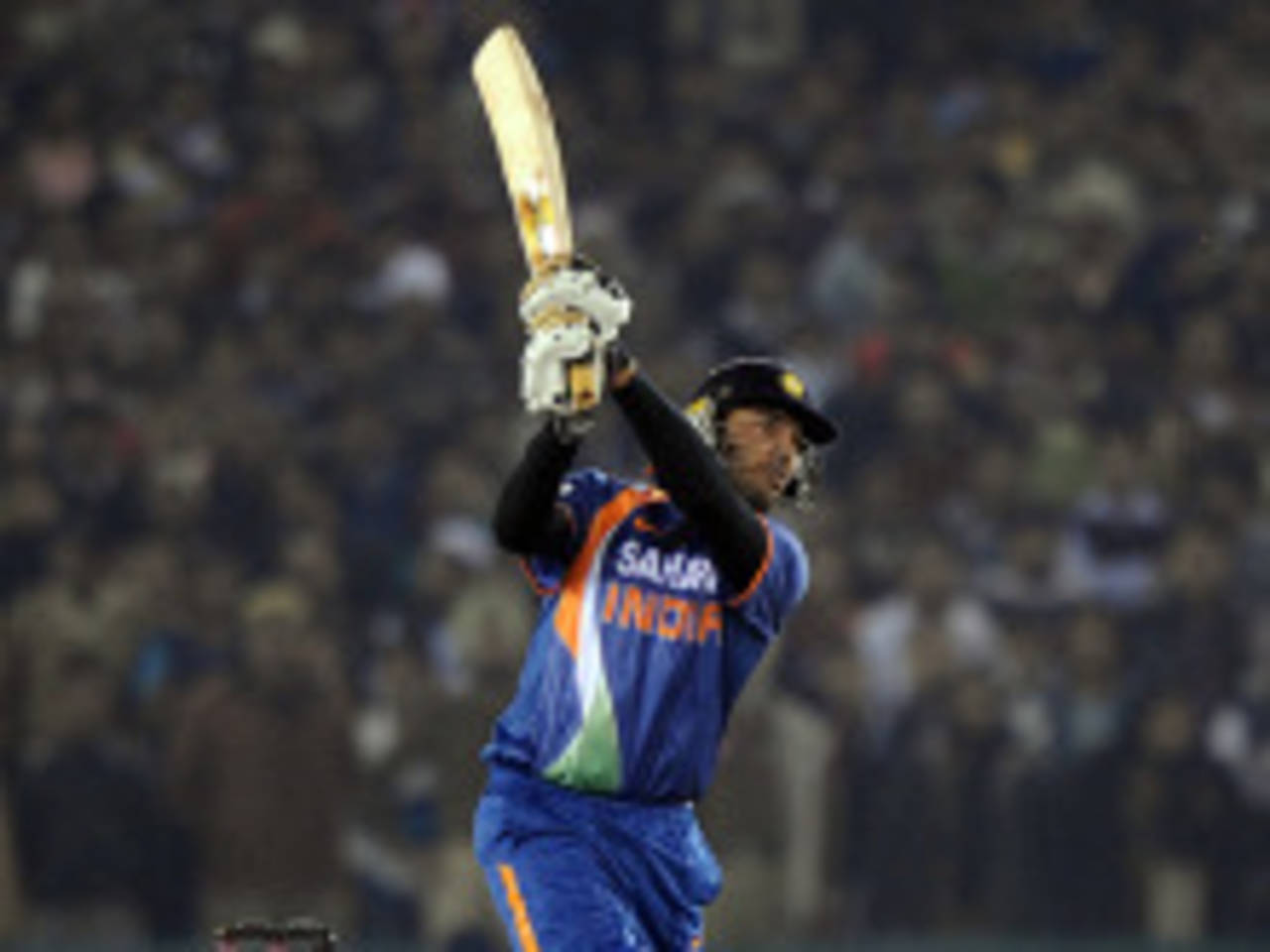To the fearless the spoils
Teams that tried to be defensive were shown up in the IPL. That should be a lesson for the World Twenty20
Harsha Bhogle
30-Apr-2010

The big if: India are waiting on Yuvraj to fire • AFP
The incessant tide of world cricket throws more cricket our way. For once it is welcome, for we in India have seen too many rumours, leaks and the like passing off as news. The allegations from the IPL are serious but sensationalism is not going to help get to the bottom of things. It is now in the hands of auditors, lawyers and tax sleuths; cricket analysts, commentators and reporters, who have had to pose as experts in recent times, can take a break. The IPL needs some peace to sort itself out, create a strong system of self-regulation, perhaps do away with a governing council, and take the right steps towards strengthening brand IPL and, indeed, brand India. So let's go back to watching cricket with old loyalties again; Indians supporting India, Australians supporting Australia, in what is probably the most open world event ever.
It will be interesting to see how much Twenty20 cricket has evolved in 10 months. If there is one thing the IPL has reinforced, it is that teams who play fearless cricket win. Teams who have tried to be defensive, safe, ended up looking anxious and lost. We saw that with Kolkata Knight Riders and we saw that but once from the Mumbai Indians. In England last year we saw South Africa play that way against Pakistan while chasing 150. I am not saying that teams must go hell for leather, self-destruct dramatically, but even closing down the game for two or three overs can be decisive.
Typically, then, teams must seek to play nine batsmen (okay, seven batsmen and two others who can get runs in the last three overs) and six bowlers. It means you must play three allrounders, your wicketkeeper must bat in the top six, and one of those batsmen must be good enough to bowl three or four overs. The conditions in the West Indies will determine whether teams with seam-bowling allrounders have a better chance or others, notably from the subcontinent, who have a greater preponderance of slow bowlers.
For various reasons, two teams catch the eye. Pakistan cricket may be in turmoil but that has rarely been an indicator of how they will play. And Twenty20 is just down their alley. It rewards instinct, freedom and fearlessness, and that has been the hallmark of Pakistan cricket. I suspect that the strength of the Pakistan team diminishes as the duration of the game rises, but in Twenty20 they will always look balanced. They have a spin-bowling allrounder in Shahid Afridi, a seam-bowling allrounder in Abdul Razzaq (both of whom can be match-winners with the bat) and a wicketkeeper who opens the batting. Perfect for balance. I believe the key for them is the quality of the top five batsmen, and Pakistan's fortunes may well be determined by how well those five play.
Pakistan cricket may be in turmoil but that has rarely been an indicator of how they will play. And Twenty20 is just down their alley. It rewards instinct, freedom and fearlessness, and that has been the hallmark of Pakistan cricket
Australia, on the other hand, slot in among the third tier of teams, placed below Bangladesh at No. 9. It is ironic that theirs are the players most valued in the IPL and in England, but collectively they have been shocking so far. Still, they have far too much going their way this year and should be a very decent bet to go all the way. A top six of David Warner, Shane Watson, Michael Clarke, Michael Hussey, Cameron White and Brad Haddin means there is a spinner, a seamer and a wicketkeeper already taken care of. Mitchell Johnson, Nathan Hauritz, Dirk Nannes and Shaun Tait (surely Doug Bollinger must be in there) means four bowlers, two of whom can bat decently. Critically, there is some pace there, which, as the IPL has shown, is back in fashion. It means No. 7 can be a floater and anyone can play there.
India will await the return to form of Yuvraj Singh. If he is in form, India have a serious chance. There is a lot of batting, but without Yuvraj in form it looks a touch incomplete. And while India have a keeper in the top six, all their batsmen bowl slow, which suggests they are a team better suited for slightly sluggish pitches. The big weakness is the absence of a seam-bowling allrounder who could bowl the middle overs and bat at, say, No. 7. And so India must decide whether to play three seamers or get by with two and play both Yusuf Pathan and Ravindra Jadeja, or indeed Piyush Chawla.
But seriously, any of those three or even Sri Lanka, South Africa, England or the West Indies could go all the way. And don't be surprised if Bangladesh create a little upset somewhere. That group - Pakistan, Bangladesh and Australia - is the one to watch in the first week.
In India, though, the tournament faces another threat. By May 10, Lalit Modi will have emerged with his defence and we will know then if people want to watch the news or the cricket. Or maybe, the news till 7pm and cricket thereafter!
Harsha Bhogle is a commentator, television presenter and writer. He is part of the IPL commentary team.